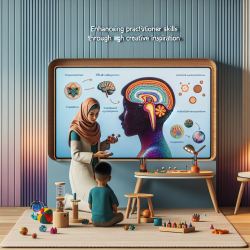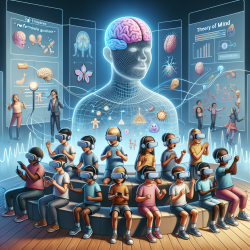Introduction
Inspiration is a fascinating yet often underexplored component of the creative process. As speech-language pathologists, understanding the dynamics of inspiration can significantly enhance our therapeutic practices, especially when working with children. The research article, "The Scientific Study of Inspiration in the Creative Process: Challenges and Opportunities," by Oleynick et al., provides valuable insights into the role of inspiration in creativity. This blog aims to translate these findings into actionable strategies for practitioners, encouraging them to harness inspiration in their work with children.
Understanding Inspiration
The study identifies inspiration as a motivational state that encourages individuals to transform ideas into reality. It distinguishes inspiration from related constructs like creativity and insight, emphasizing its unique role in the creative process. Inspiration is not merely about generating ideas; it is about the motivation to actualize these ideas, a crucial distinction for practitioners aiming to foster creativity in children.
Implementing Inspiration in Practice
Here are some practical ways practitioners can incorporate inspiration into their therapeutic approaches:
- Create an Inspiring Environment: Design therapy spaces that are visually and intellectually stimulating. Use art, music, and storytelling to evoke inspiration.
- Encourage Self-Expression: Allow children to express themselves freely through various mediums such as drawing, writing, or speaking. This freedom can lead to moments of inspiration.
- Model Inspirational Behavior: Demonstrate enthusiasm and passion in your work. Children often mirror the attitudes and behaviors of adults around them.
- Use the Inspiration Scale (IS): Implement the IS to measure and track inspiration levels in children. This tool can help identify what inspires each child, allowing for tailored interventions.
The Role of Neuroscience
The article also highlights the potential of neuroscience to deepen our understanding of inspiration. By exploring the neural underpinnings of inspiration, we can better comprehend how creative ideas are transformed into actions. This knowledge can inform the development of new therapeutic techniques that leverage the brain's natural capacity for inspiration.
Encouraging Further Research
While the current research provides a solid foundation, there is ample opportunity for further exploration. Practitioners are encouraged to contribute to this growing field by documenting their experiences and outcomes when applying these concepts in therapy. Collaborative research efforts can lead to more refined strategies and improved outcomes for children.
Conclusion
Inspiration is a powerful force that can significantly enhance the creative process. By understanding and applying the principles of inspiration, practitioners can foster more effective and engaging therapeutic experiences for children. To delve deeper into the scientific study of inspiration, I encourage you to read the original research paper, The scientific study of inspiration in the creative process: challenges and opportunities.










